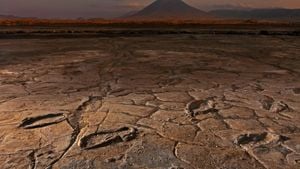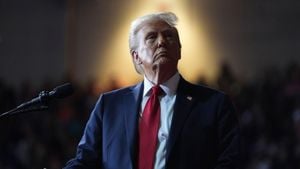The $1.9 billion border wall project, originally championed by the Trump administration as part of its immigration strategy, is now entangled in legal challenges and shifting political winds. President Biden's recent decision to continue construction, particularly through the Rio Grande Valley, is reigniting old debates and stirring fresh controversy.
With the Biden administration opting to utilize still-existing funds for the wall, many critics have raised eyebrows. Environmental advocates express alarm at the potential impact on local ecosystems, including the habitats of endangered species like the ocelot and the jaguarundi. These creatures, once commonly found along the Texas-Mexico border, now number less than 250 and are increasingly vulnerable to habitat loss and fragmentation caused by construction.
Legal disputes also loom large over the project. A notable case involves the Center for Biological Diversity, which has filed motions against the Department of Homeland Security, arguing the wall contradicts the National Environmental Policy Act. Their assertion posits the wall would significantly harm both wildlife and natural habitats, challenging the administration's claims of responsible fiscal and environmental stewardship.
Not just environmental issues are at stake. There’s also the matter of labor and local economies. The border wall projects, as some construction workers explain, promise jobs, but labor unions are split on whether the trade-offs justify the social and environmental costs.
Opposition from various fronts has prompted the administration to justify the need for enhanced security measures. Proponents argue the wall is necessary to address surging border crossings and undocumented migrants, which have become thorny issues amid rising public concern and political pressure.
Local residents are divided as well. Some see the wall as a needed deterrent against human trafficking and drug smuggling, hoping it will protect their communities. Others argue the wall symbolizes division and contradicts the multicultural identity of the border regions, which have historically thrived on cross-border interactions.
The Biden administration has had to balance these competing interests carefully. Recently appointed Secretary of Homeland Security Alejandro Mayorkas emphasized the importance of responsible immigration policies but acknowledged the heightened security concerns, exacerbated by recent spikes in crime across the border.
Mayorkas insisted the decision to proceed with the wall projects was necessary to fill gaps—in both security and migration control—placing emphasis on data-driven assessments to guide federal actions. Despite this, internal divisions among Democrats heighten the tension, with some pushing for alternatives to physical walls, advocating for technological solutions and focused infrastructure improvements to bolster border security.
There’s also the financial angle to reckon with. Opponents of the wall construction argue those billions should be redirected toward community services, education, and healthcare. They question the effectiveness of the wall as a deterrent, pointing to other, more holistic methods of border management.
Political headwinds complicate the issue even more. Midterm elections loom large on the horizon, and the topic of border control remains high on voters’ minds. The bifurcation between Democrats and Republicans on almost every aspect of immigration policy could impact not only the upcoming elections but also how comprehensive reform might be pursued going forward. By signaling support for continued construction, Biden risks alienation among progressive factions of his party who have supported his policies but are deeply skeptical of wall-building as a solution.
Despite the pushback, the Biden administration reiterates its commitment to addressing border security and immigration reform, asserting the wall remains but one part of the equation. This complex and charged issue will likely continue to evoke passion from all sides and may shape the political discourse for years to come. The continued construction of the wall has become more than just bricks and mortar; it's emblematic of the larger struggles and questions facing the nation today.
One resident lamented, "This wall does not represent our values. It confines us instead of connecting us." Yet as long as the pressure from political opponents and reality at the southern border persists, the saga of the border wall will undoubtedly remain at the forefront of American politics.



